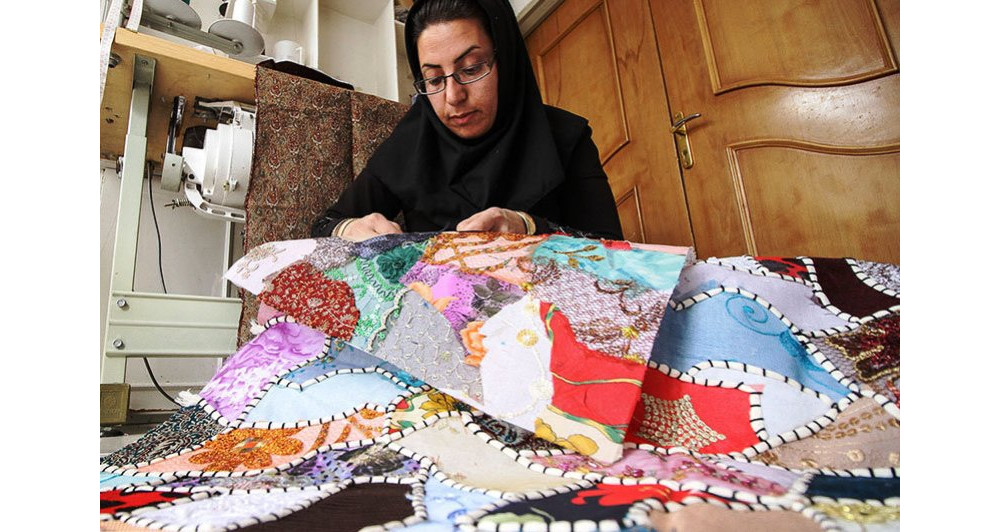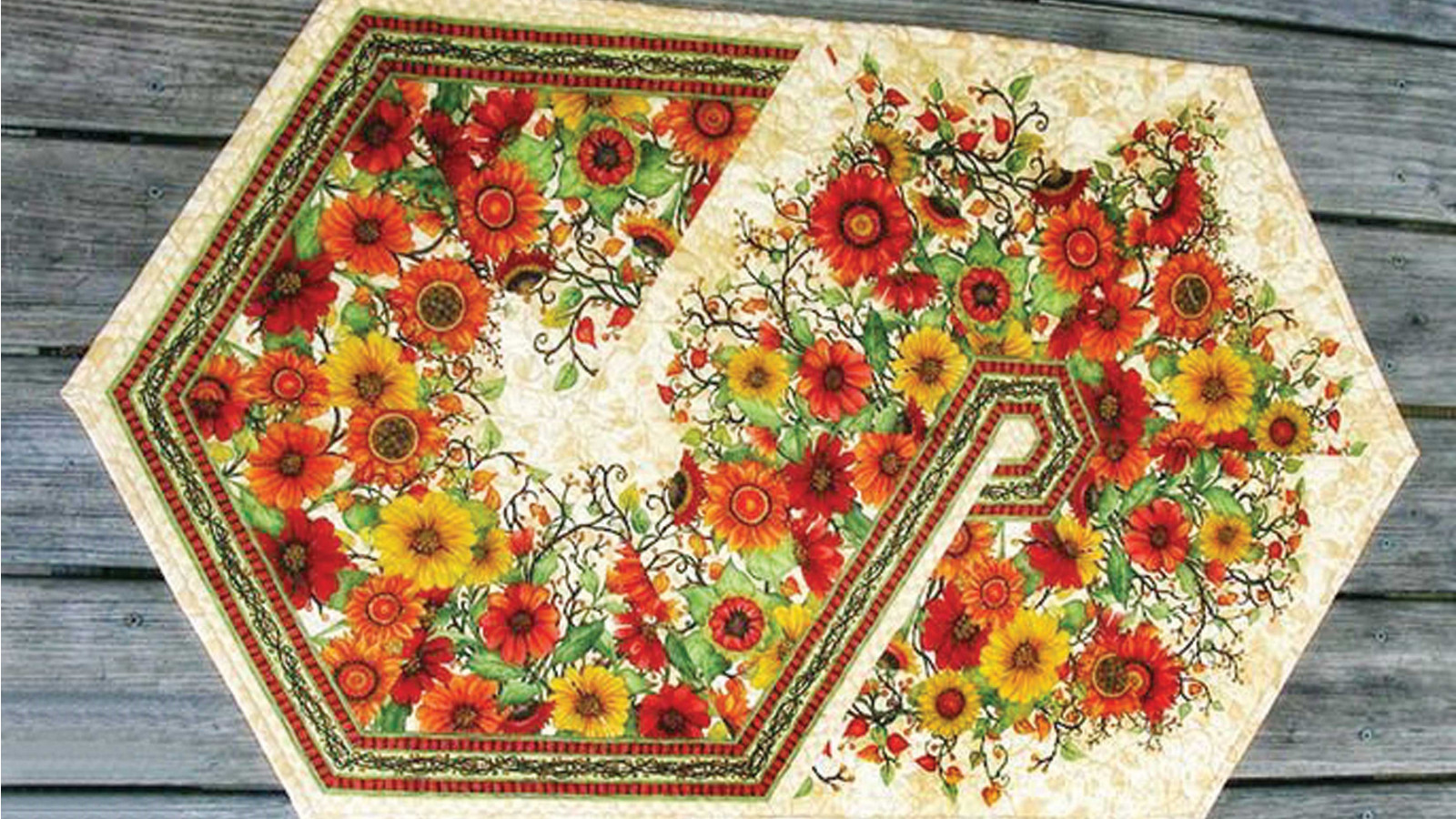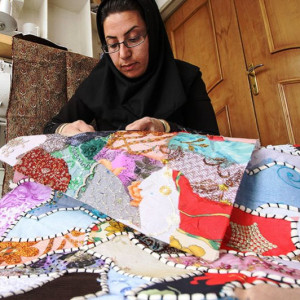
Chehel Tekeh Duzi of Chaharmahal and Bakhtiari
Chehel Tekeh Duzi, or scrap quilting, is one of the traditional embroideries of Iran and is also called “Khatami Duzi”, “Landreh Duzi” or “Tekeh Duzi”. This craft is art of sewing pieces of kinds of simple, floral, striped, or polka dots fabrics together, and the name “Chehel Tekeh” (made of forty pieces) refers to use of a large number of pieces in this handicraft. The fabrics are cut into forms of square, triangle, rectangular and diamond which are attached to each other on the back using simple stitches. Then they are sewed and tightened to each other. What makes these crafts stylish is the composition of colors and sizes of the pieces that is created by appropriate arrangement of various and versatile fabrics next to each other. When all the pieces are in the forms of square, rectangular and especially triangle of the same size, the final products look like pieces of “Khatam”, an ancient kind of Iranian inlaying. That is why these quilts are also known as “Katami Duzi”. Sometimes, to add to the beauty, silk stitch work is applied in some parts, for example on the seams but this practice is mostly found in older samples.
Methods of Chehel Tekeh can be divided into five general groups: 1. simple method 2. “Mo’aragh” or marquetry method 3. “Zakhim Duzi” and Boreshi” 4. “Namadi” or felt fabric method 5. “Morasa’e” or inlay method. In the simple method, the forms are mostly geometric and floral fabrics are used more commonly. In Mo’aragh method, the creator first draws the design on the background fabric, then he cuts some specific pieces and replaces the same size pieces from other fabrics. By giving importance to the harmony of the colors, calculating the sizes and using decorative stitches on the seams, the quilt achieves a fascinating view. For the “Zakhim Duzi and Boresh” method, five to six layers of fabric are used, hence the name “Zakhim” which means the word “thick” in Persian. First, the design is drawn on the background fabric, then by cutting away pieces from different layers on the top, the colors from layers at the bottom become visible. The “Namadi” can be done since it uses felt fabrics which do not fray or tear easily, and also there is no need to fold the edges. And in the Morasa’e method, the artist sews gemstones, pearls, glass beads and “Zoghre” (sormeh and sequins) on the quilts. Tekeh Duzi is very popular in many cities of Iran such as the province of Chaharmahal and Bakhtiari.

